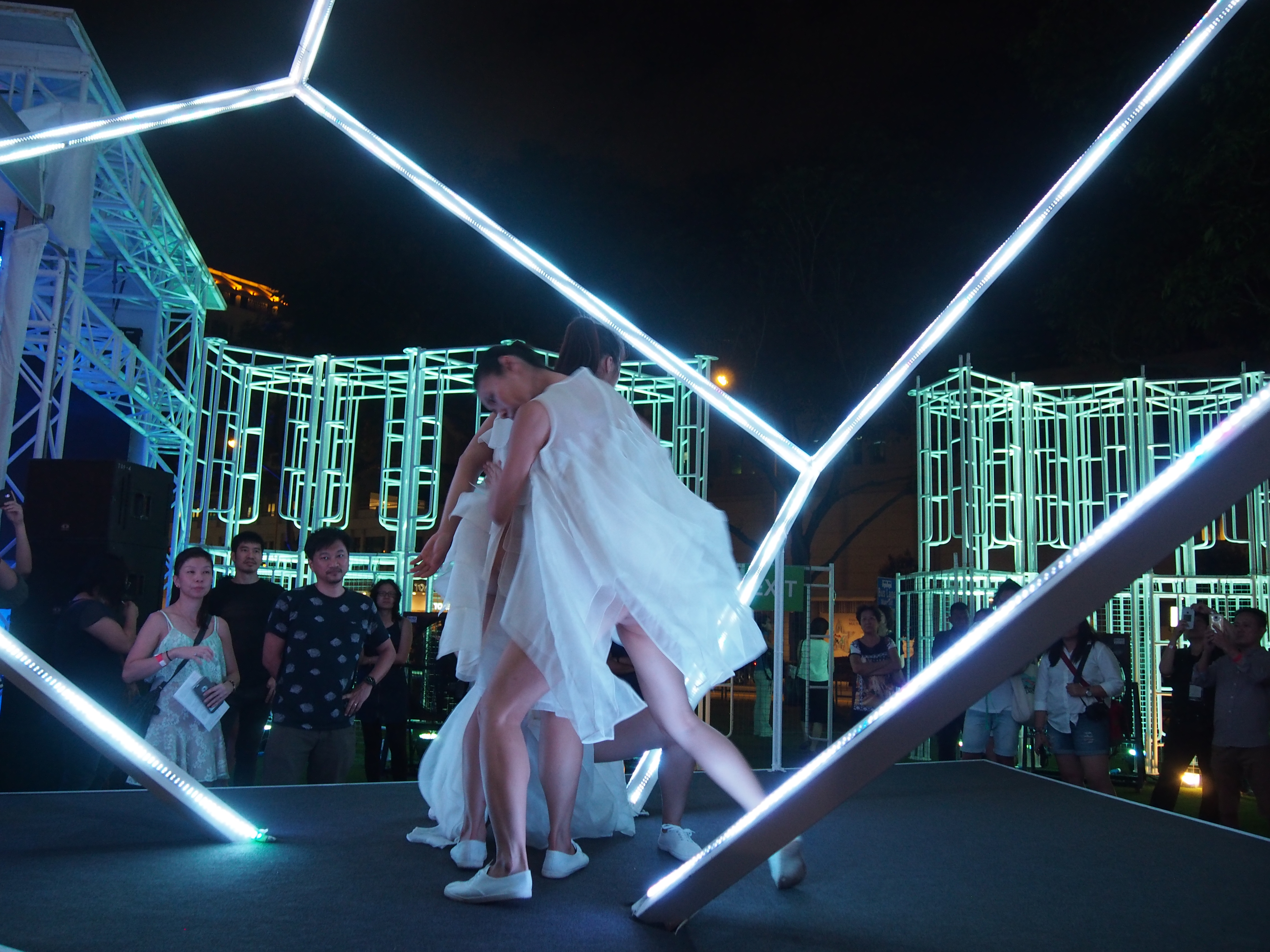What a beginning to an end.
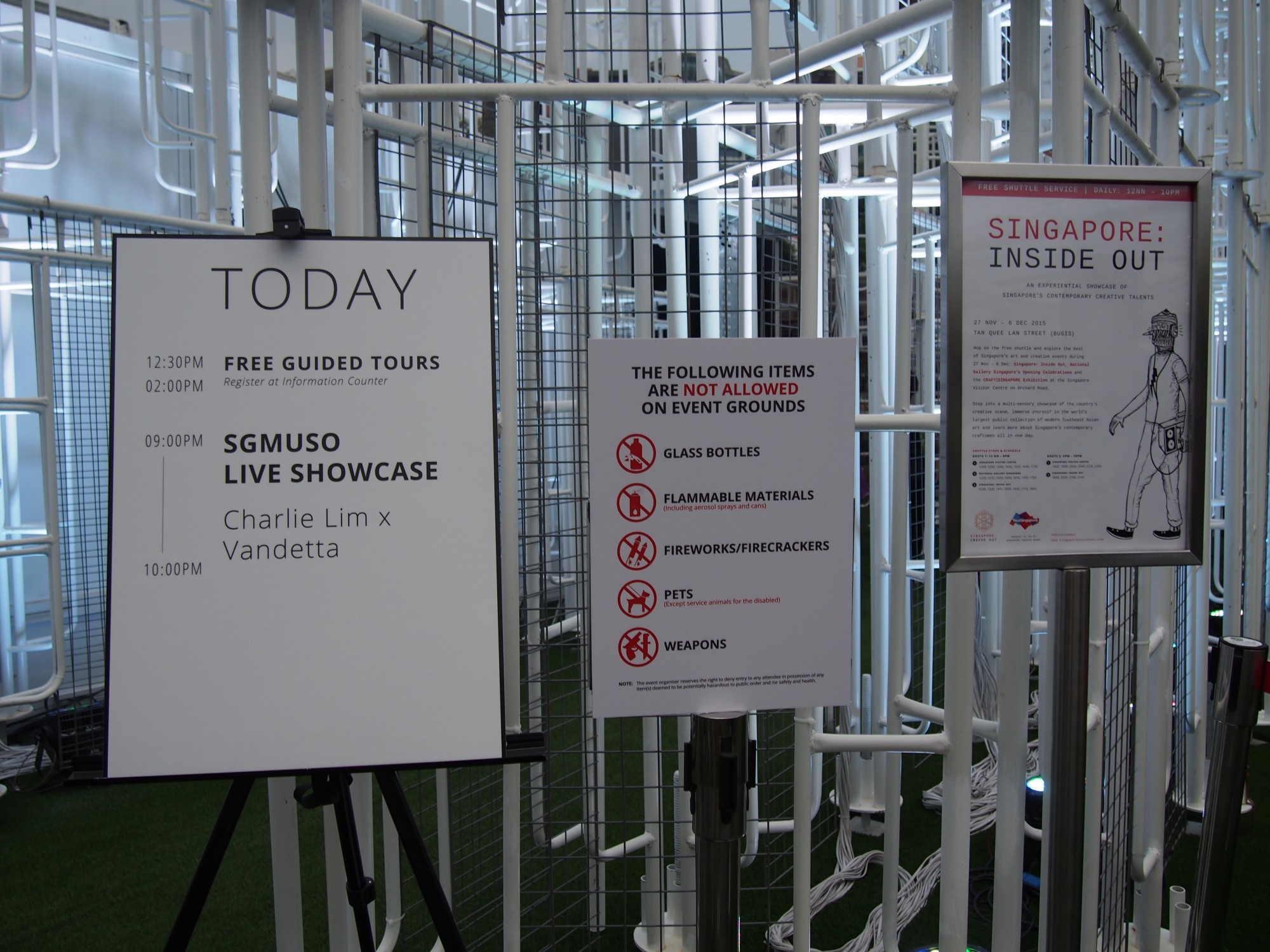 Photo by Eisabess Chee
Photo by Eisabess Chee
It's been a week of rounding off our year-long SG50 celebrations — by launching even more celebrations, of course.
And yes, nothing surprising about that — we are, after all, a people by now largely accustomed to nationwide, state-sponsored festivities.
What is surprising, however, is the focus of these initiatives. Many of the concluding jubilee celebrations have been launched in relation to the field Singapore was long presumed to be barren of: the arts & culture. (Take the opening of the National Gallery, for instance.)
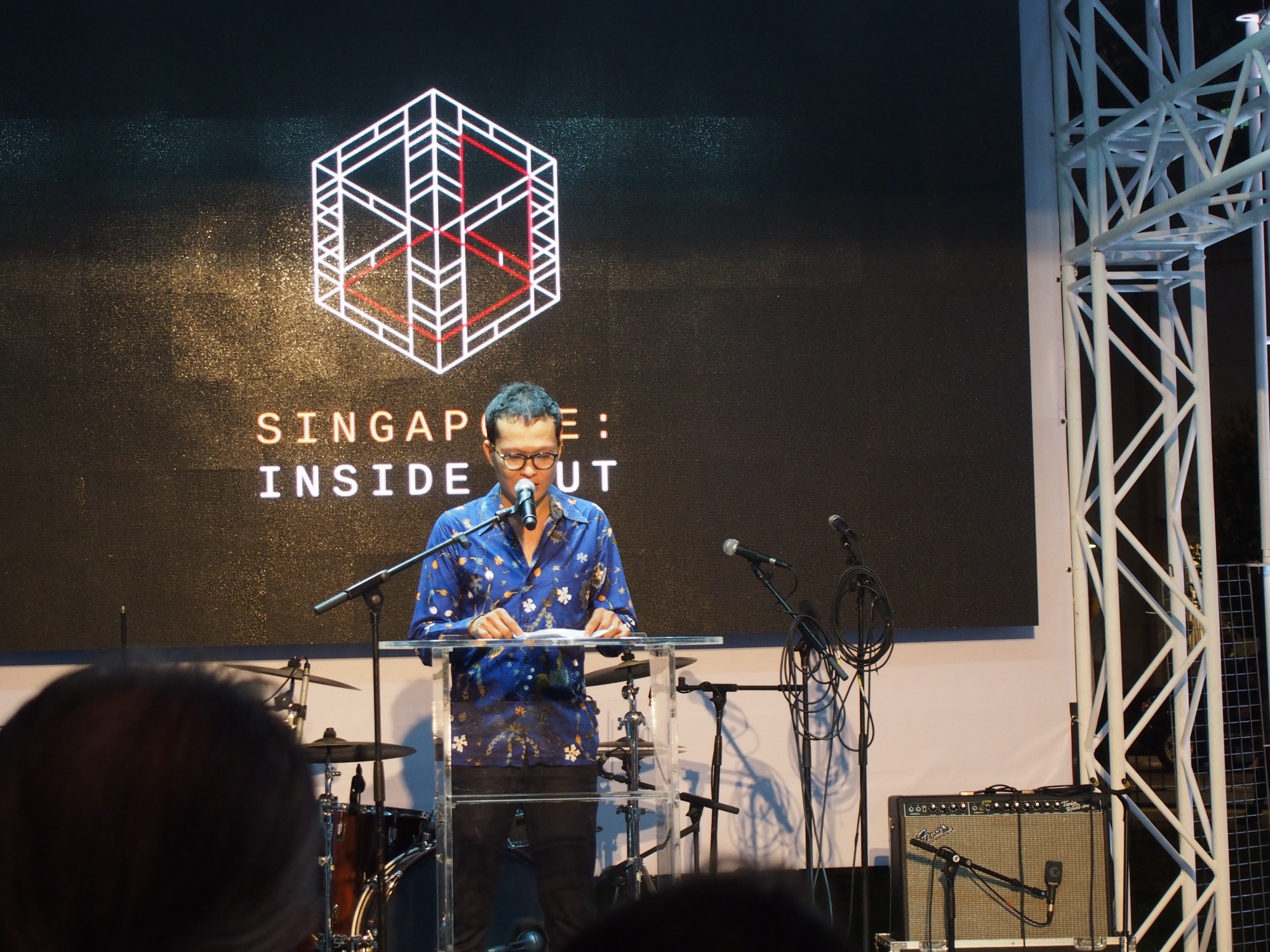 Photo by Eisabess Chee
Photo by Eisabess Chee
And now, meet Singapore: Inside Out, a hefty Singapore Tourism Board-led project that was sent to Beijing, London and New York City — but no, it isn't that Disney-Pixar animation film released earlier this year.
Inside Out is a travelling showcase of multi-sensorial experiences curated by award-winning Singaporean architect and artist Randy Chan, and designed variously by Singapore’s artistic talents. After spending the better part of this year in the aforementioned three cities, it's back home for one final exhibition.
Here are three ways this cross-disciplinary showcase will prove you wrong about Singapore's arts scene:
a) The exhibits, for one
Think the literary field is sterile and unproductive? Let published poet and editor Alvin Pang’s 100 Titles selection prove you wrong:
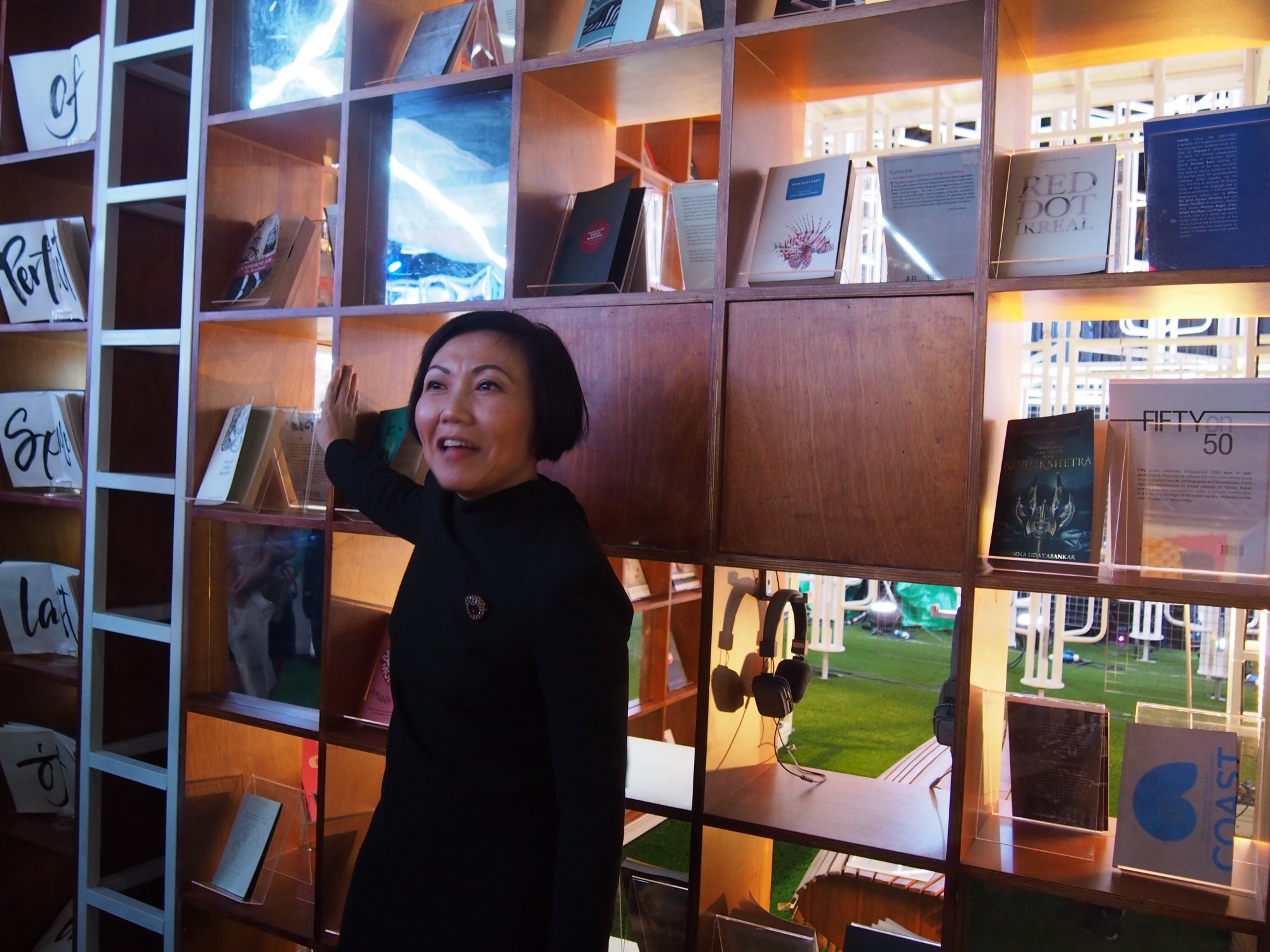 Photo by Eisabess Chee
Photo by Eisabess Chee
(Here's local actress and theatre practitioner Noorlinah Mohamed role-playing Alvin Pang in ACTORS!)
Or maybe we’re missing a soundscape? Well, then — being greeted by Zul Mahmod’s sound installation Alice, Did You Hear That? that turns everyday sounds into rhythm and harmony should have changed your mind.
 Photo by Eisabess Chee
Photo by Eisabess Chee
Immerse yourself also in art collective Vertical Submarine’s experiential art installation, A Pier is a Half-Hearted Bridge, that throws the illusion of reality into vast relief.
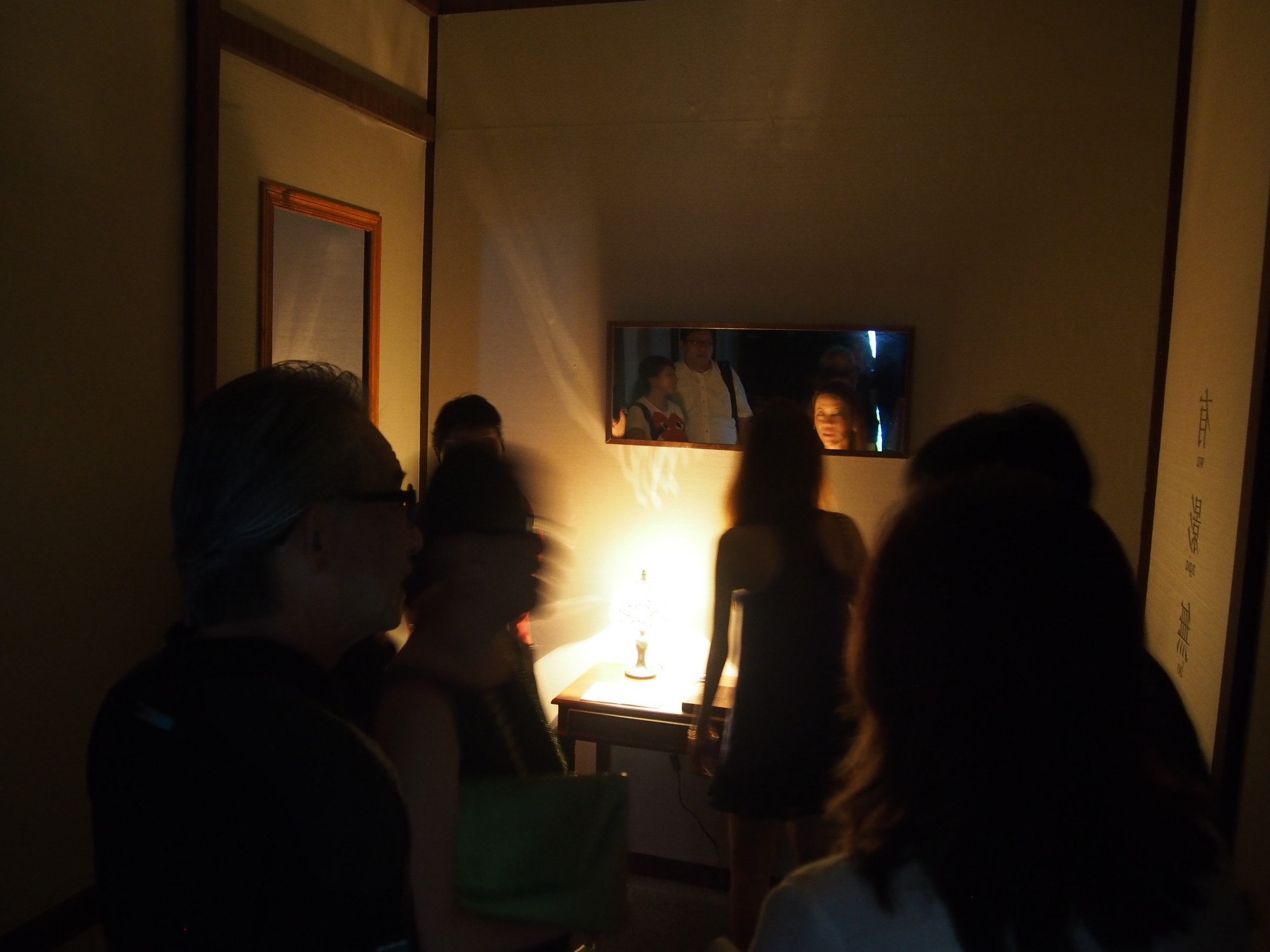 Photo by Eisabess Chee
Photo by Eisabess Chee
For something more experimental, look no further than one of Singapore’s top ceramists Jason Lim’s performance piece, Inside/Outside. Lim uses lighted Chinese candles and wax drippings to char his clear-walled space to mark the passage of time.
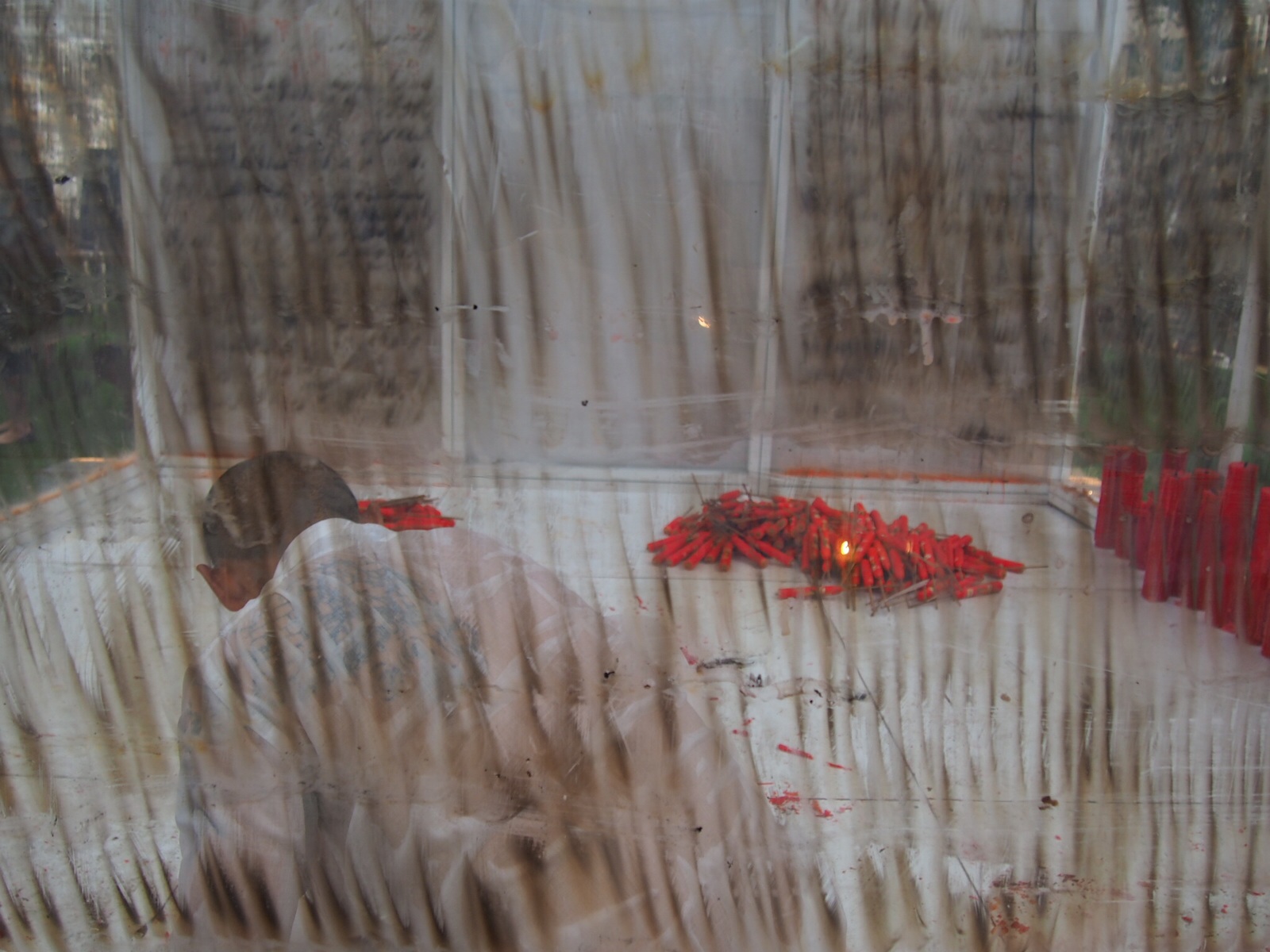 Photo by Eisabess Chee
Photo by Eisabess Chee
With all this, how could one continue to insist that Singapore is a graveyard of culture?
b) The things people abroad are saying.
Here's what prominent folks from the arts scene in places Inside Out has visited have said:
1. Xu Ding Zhong, Professor, Beijing Dance Academy
“Singapore: Inside Out fuses modernity and the traditional to present Singapore in a whole new light — a vibrant and creative nation. The East-West influence of the works also embodied Singapore’s multi-culturalism and openness to various ideas.”
2. Jerry Saltz, Senior Art Critic, New York Magazine
“To come to New York City, and build a kind of open-air Kasbah, carnival art fair museum? Amazing! I know about the huge, amazing, exploding arts scene in Singapore and I'm madly jealous.”
3. Sharon Ament, Director, Museum of London
“Every single sense was touched. Anyone would realise, coming to Singapore: Inside Out, the breadth of artistic invention and the intervention that’s happening in Singapore.”
Should we still keep the blasé attitude many of us have towards homegrown artists, even while at the same time, so many established professional art creatives, critics and curators are speaking so highly of Singaporean contemporary art?
c) The food
Now, could you really expect to draw crowds without the year-round draw of Singapore's world-renowned food?
Held in conjunction with Inside Out, Singapore Takeout is in turn a showcase of reinvented traditional local fare.
Here, 12 highly-decorated local chefs serve up creative interpretations of perennial Singaporean culinary favourites, such as chilli crab, bak kut teh and beef rendang.
(Okay, it's essentially glorified hawker food going for prices ranging between $2 and $15, but hey — local food.)
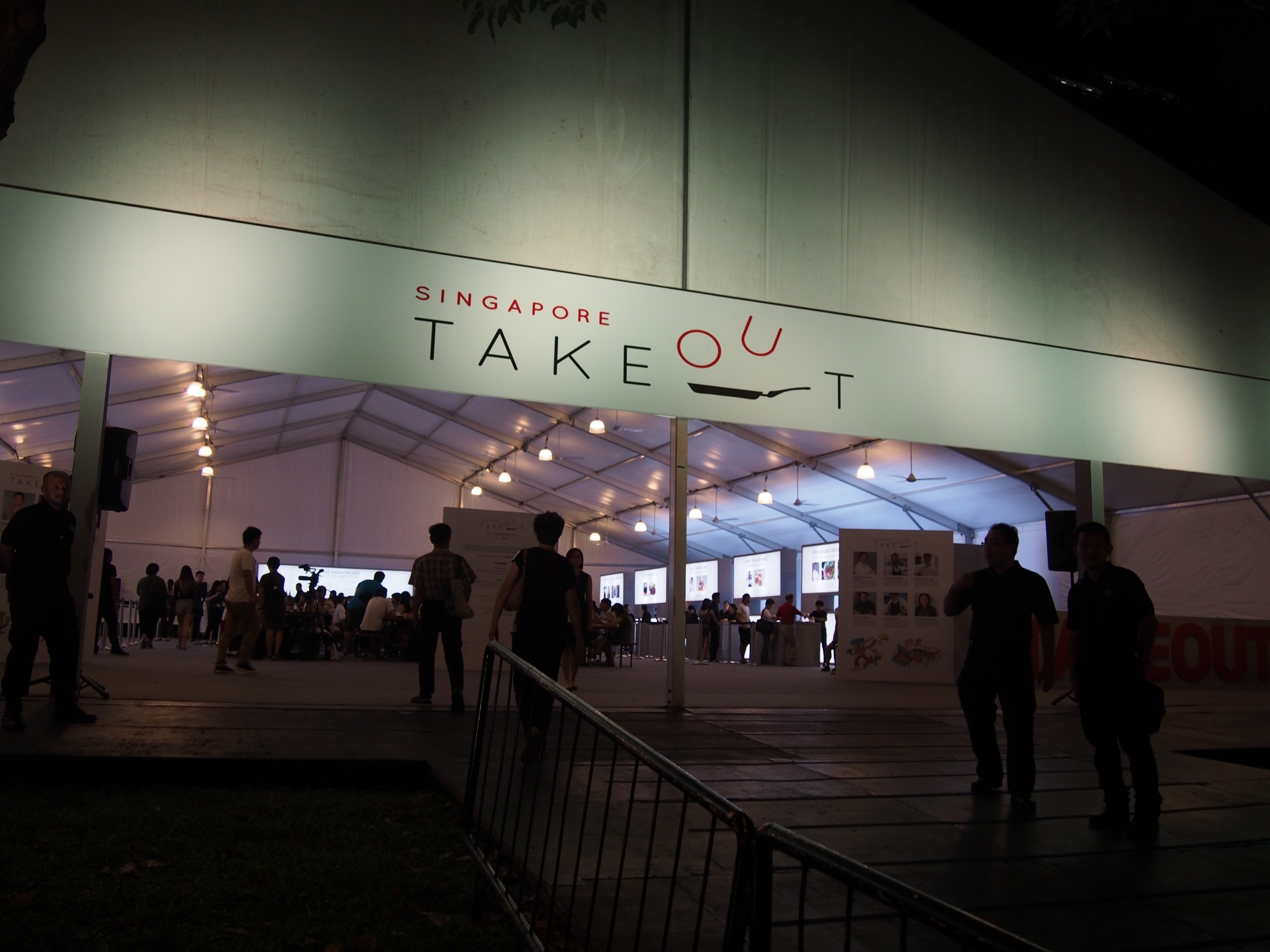 Photo by Eisabess Chee
Photo by Eisabess Chee
Not to mention that Janice Wong, chef and owner of 2am:dessertbar is also herself included as a featured artist in Singapore: Inside Out. Without discounting her thoughtful yet cheeky art installation 1000 crosses in which food (in this case, chocolate lollipops with laksa, chilli crab, lemongrass and bak kwa flavours) makes a statement of signature Singaporean heterogeneity, is it really any surprise that we would unhesitatingly include a dessert artist in the local artistic landscape?
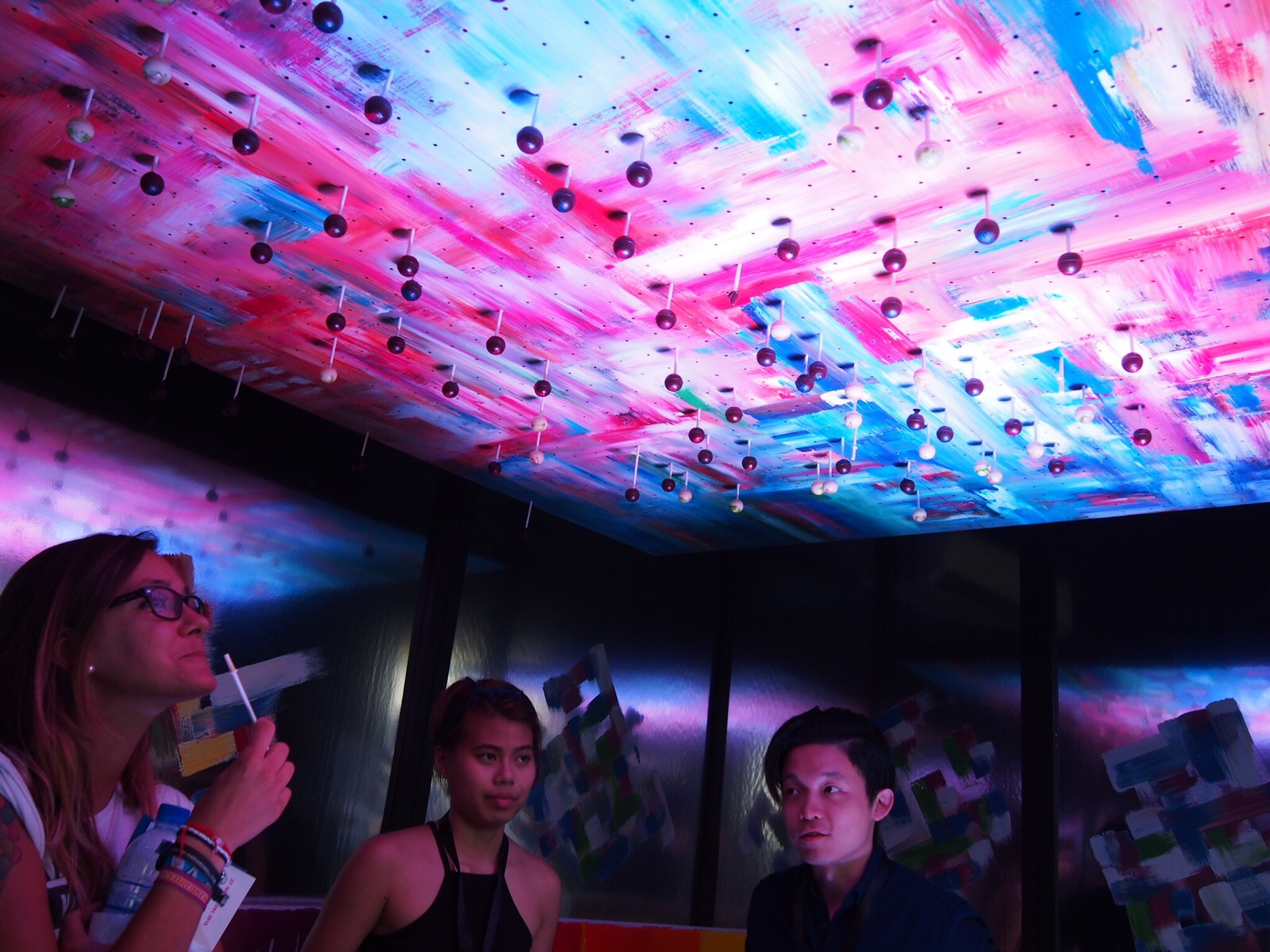 Photo by Eisabess Chee
Photo by Eisabess Chee
Wong's art installation.
Yet, as with many things in Singapore, there remains plenty of room for improvement.
If we are to emulate global creative cities such as the ones that Singapore: Inside Out had exhibited in, we need to do more than put together mere ad hoc pop-up festivals.
First of all, it hasn't really been advertised as an arts event in its own right, but as part of the year-end Golden Jubilee activities.
This sends a message that, unlike the annual highlights of the M1 Fringe Festival or Singapore Writers Festival for instance, artists who do not fall into traditional artistic categories can easily be left on the back burner — and we should certainly avoid adopting such a mindset.
Besides, these cross-disciplinary collaborations should really be done more often — these do increasingly show that Singapore’s various artistic fields shouldn't be cut up the way they currently are.
Since we've got a history of defying expectations, we should allow our arts to flourish in a uniquely Singaporean manner — even if they do become a mishmash of everything, as opposed to the clinical categorised art forms we're used to seeing today.
Thirdly, we should look to establishing a permanent home for contemporary art.
Though the Singapore Art Museum (SAM) has consistently supported Singapore’s emerging talents, there is much to be reaped from taking on a specialised area of focus.
Much like how one would immediately look to New York's Museum of Modern Art for references of postmodern works, it would do well to rebrand the SAM (or any of its ilk) with a similar niche.
After all, Singapore’s art scene can only grow from here on.
Top photo by Eisabess Chee.
If you like what you read, follow us on Facebook and Twitter to get the latest updates.
If you like what you read, follow us on Facebook, Instagram, Twitter and Telegram to get the latest updates.
